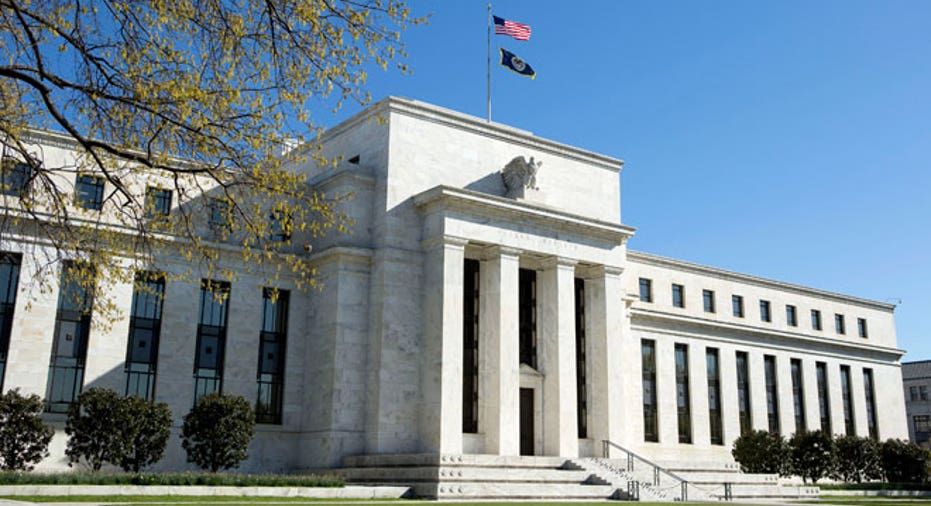Markets Seek Clues from Fed Speakers

Economic data has been all over the place in recent weeks, leaving investors to focus on the words of Federal Reserve policy makers for clues as to where the markets might be headed.
The problem is that, much like the recent economic data, individual Fed members often send contrasting messages. Consider speeches today from Dallas Fed President Richard Fisher, Minneapolis Fed President Narayana Kocherlakota and Atlanta Fed President Dennis Lockhart.
Fisher, an inflation hawk and vocal opponent of no-end-in-sight Fed stimulus, spoke earlier Tuesday in Australia, offering the following warning: “There’s a tipping point where monetary accommodation comes to be viewed not as the pleasant stimulus that levitates bond and stock and housing markets all over the world. But, instead becomes an agent of financial recklessness.”
Fisher and his fellow Fed hawks believe asset bubbles and runaway inflation will inevitably occur if the central bank doesn’t reign in its stimulus programs, namely the $85 billion a month in bond purchases known as quantitative easing and near-zero interest rates.
Meanwhile, Kocherlakota, a recent convert to dovishness, and long-time dove Lockhart offered counterpoints to Fisher in separate appearances.
Kocherlakota said in a speech in Minneapolis that he wants the Fed to keep interest rates at their historic lows until the unemployment rate drops to at least 5.5%. That would be a significant departure from current Fed policy, which calls for reviewing a possible hike to the fed funds rate once the unemployment rate hits a threshold of 6.5%.
Kocherlakota also suggested that tapering the Fed’s bond purchases too soon would further hinder an already-slow economic recovery.
The bond purchases, according to Kocherlakota, “push down long term interest rates, and encourage consumers to spend and businesses to invest.”
The ongoing debate over whether the Fed should taper its bond purchases sooner rather than later “seems puzzling,” Kocherlakota said.
Peter Boockvar, chief market analyst at the Lindsay Group, noted the sharply different messages from Fisher and Kocherlakota.
“In stark contrast to non-voting member Fisher, non-voting member Kocherlakota is repeating his extreme dovishness, belief in Fed policy in creating employment, expressing little concern for asset bubbles and showing an inability to move away from his econometric models,” the analyst said.
In Lockhart’s speech the Atlanta Fed president reiterated his staunch support of stimulus for the foreseeable future, echoing comments he made in a speech last week. “Monetary policy overall should remain very accommodative for quite some time,” Lockhart said.
Nevertheless, Lockhart said he couldn’t rule out a decision to begin tapering bond purchases at the Fed’s December meeting.
It’s likely the dovish approach will win out since that’s the strategy supported by current Fed Chair Ben Bernanke and his likely successor Janet Yellin.
Wall Street has cheered stimulus from the beginning, funneling cash created by the Fed’s easy-money policies into stock and bond markets, pushing the major equity indexes to record highs. The Dow Jones Industrial average closed at another all-time high on Monday.
The markets’ fondness for stimulus has created an inverted investing strategy in which good news is bad news for investors as traders have taken any sign of enduring economic strength as possible justification for the Fed to start easing off stimulus. Consequently, strong economic data has prompted selloffs, while weak data has turned investors bullish.
Investors have been whipsawed by the data in recent weeks, hence the focus on Fed speeches, which haven’t helped much either.
On Friday the U.S. Labor Department reported surprisingly strong October job gains. The economy added 204,000 jobs, far more than the 125,000 analysts had predicted. In addition, the government revised upward by 60,000 the number of jobs created in August and September.
The solid October jobs report, despite the partial government shutdown in October, has revived chatter that the Fed may begin tapering its bond purchases in December. Weak data in August and September had seemingly taken tapering off the table until 2014.
Bad news arrived Tuesday, however, in the form of a downbeat survey from the National Federation of Independent Businesses that gauges small business owners’ optimism. The NFIB’s measure of small business confidence slumped to 91.6 in October from 93.9 the month before, "largely due to a precipitous decline in hiring plans and expectations for future small-business conditions."
The Congressional debt stalemate last month that shut down portions of the government and threatened a U.S. default was blamed for the pessimistic view taken by small business owners.
"Washington paralysis is never good news for the economy, so it was no surprise that while politicians were arguing over whether or not the government should remain fully operational, small-business optimism measures deteriorated," said NFIB chief economist Bill Dunkelberg, in the report.



















